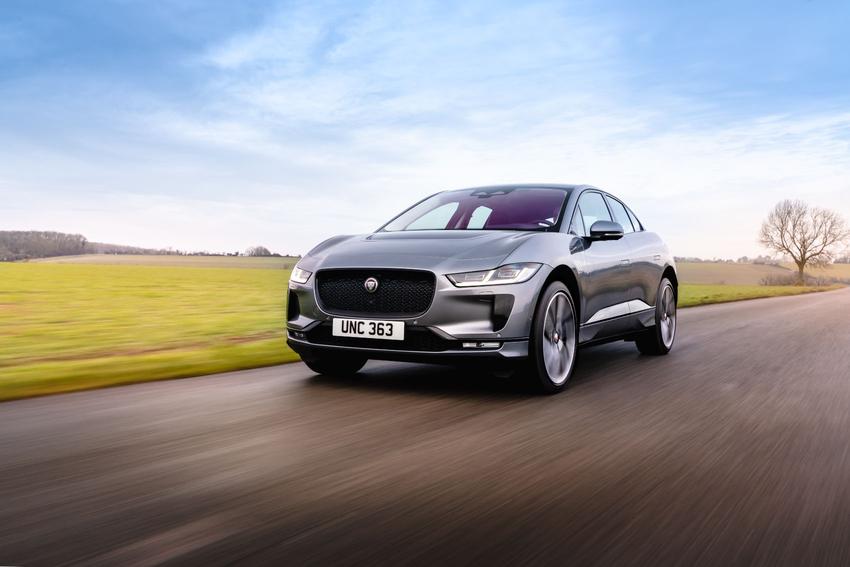After 74 years, Detroit electric cars return with sports cars
In an era when gasoline is being challenged as the main method of moving cars, Anderson Carriage Company sees electrification as the future of personal driving. Anderson was founded in 1907 and later evolved into the Detroit Electric Vehicle Company. From 1907 to 1939, this automaker will become a prolific electric car brand in the United States. The Detroit Electric Vehicle Company has produced more than 35,000 electric vehicles and has only recently reached its production level.
the apparent renaissance of electric vehicles, the Detroit Electric name returns. The 2013 resurrection of the Detroit Electric name will evolve around a limited edition sports car called the SP:01.
Assuming the identity as a two-seat sports car, the Detroit Electric SP:01 is shaped entirely with carbon fiber body panels over an aluminum structural frame. Providing open-air electric motoring, the Detroit Electric SP:01 is configured with a Targa-style top. In inclement weather, a soft top or a standard body colour matching hard top section can shield the driver of the sports car. If the Detroit Electric SP:01 appears similar to a Lotus Elise, there is a good reason for that impression. Lotus will be supplying the unpowered rolling chassis for the Detroit Electric SP:01. Albert Lam, the founder of this recent incarnation of Detroit Electric, was also formerly part of Group Lotus. Employed with companies such as Apple Inc., Lam has also been involved with Chinese-based electric vehicle producer ZAP. The Detroit Electric follows the iconic Tesla Roadster as electric sports cars based off Lotus-supplied components.
With fashion playing a part even during the infancy of the car industry, automobiles developed characteristics we continue to use to discern vehicles. While the Ford Model T became the de facto image where modern motoring would evolve, the original Detroit Electric vehicle incorporated a faux radiator grille presenting an illusion of gasoline power. This design trait is shared on the Detroit Electric SP:01 around a license plate bracket. A black carbon fiber piece is used to create an imitation opening. Electric Blue, Metallic Black, Lightning Silver, Pearl White, Ardent Red, Bronze Orange, and Pearlescent Green are listed as colour choices for the Detroit Electric SP:01 sports car. Alloy wheels consist of 16-inch and 17-inch rear rims provided in several patterns available in black or silver.
The power source for the Detroit Electric SP:01 is an asynchronous AC electric motor generating the equivalent of 201 horsepower. Electrical power is stored in a 37 kWh lithium polymer battery. Through a 240-volt charging port, the Detroit Electric SP:01 gains a full charge in a spiffy 4.3 hours. Applying a system named 360 Powerback, the SP:01 electrical system can also feed energy into a home serving as a backup power unit. A single charge is appraised in pushing the sports car across 180 miles of road. Better than a Ford Focus Electric or

Nissan Leaf, the Detroit Electric’s range is falls short of the Tesla Roadster that featured a larger 53 kWh battery. The Detroit Electric SP:01’s powertrain can be matched with a choice of three transmissions. A four-speed manual, five-speed manual, or a Twinspeed automatic can provide the performance habits for the electric speed machine.
Weighing 2,403 pounds, the Detroit Electric SP:01 makes the most of 201 electrically derived horsepower. Acceleration from 0 to 62 miles per hour requires just 3.7 seconds. This SP:01 performance statistic is equal to the latest model Tesla Roadster. Beyond its fast-accelerating start, the Detroit Electric SP:01 can streak to a top speed of 155 miles per hour.
With a quiet performance sound roughing overhead, the two passengers riding in the Detroit Electric SP:01 sports car sits in an interior rich with carbon fiber, aluminum, and leather material. Besides the standard black colour, blue, red, and tan can be chosen for the leather trim inside the SP:01. Infotainment technology is managed completely through a smartphone app. Called SAMI (Smartphone Application Managed Infotainment), vehicle functions such as audio control and satellite navigation can be manipulated with a modern touch. The Detroit Electric’s SAMI interface is also effective in remotely managing the SP:01 sports car’s charging system.
The first Detroit Electric SP:01 model is planned to leave the production floor at the end of August. Retailing for $135,000, production of the electric sports car will be strictly limited to 999 vehicles. The limited production will also Detroit Electric to seek exemptions from certain costly measures the higher-volume conventional automakers have to endure prior to listing a vehicle for sale. It’s worth mentioning that Electronic Stability Control, anti-lock brakes, and front airbags are all equipped on the Detroit Electric SP:01 sports car. Beyond the SP:01, the new Detroit Electric car company’s desire is to expand into future electric vehicle offerings.
After almost three-quarters of a century out of the auto sector, we’ll be tempted to see if the Detroit Electric name can shine in this new prime time era for electric vehicles.
Source of information and pictures: Detroit Electric
-
Latest
 2022 Jaguar I-Pace: More intelligent features of Jag Tomcat EV
2022 Jaguar I-Pace: More intelligent features of Jag Tomcat EV2022 Jaguar I-Pace is about to introduce a series of new features and faster charging speeds. It was unveiled in 2018 as the first electric SUV from a European high-end car manufacturer, and won the 2...
-
Next
 Yokohama Tire Review 2021
Yokohama Tire Review 2021Yokohama ReviewIn Our Opinion:Yokohama tires are a good choice for many drivers. The company offers a wide range of products, but consumers tend to prefer its performance and all-season models. Yokoha...
Popular Articles
- Ivy Charging Network cooperates with the Ontario municipal government to build a level 2 charger
- The Canadian government invests in a clean car and aerospace center in Hamilton
- Mitsubishi Motors Canada Appoints Kenji Harada as New President and Chief Executive Officer
- Nissan announces Canadian pricing for the new 2021 Rogue
- FedDev Ontario invests in Canada's first car accelerator in Windsor-Essex
- 2019 Volvo V60 unveiled, emphasizing versatility and safety
